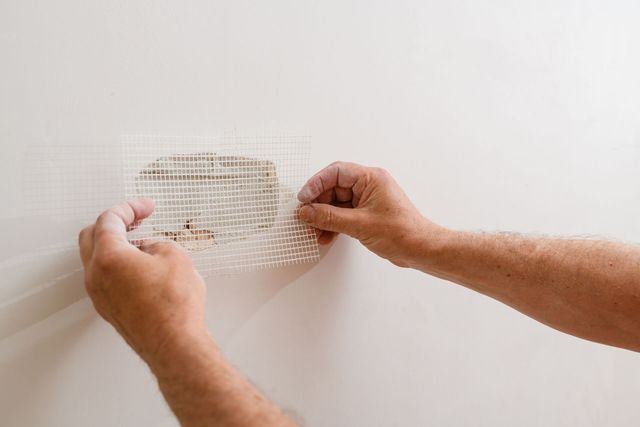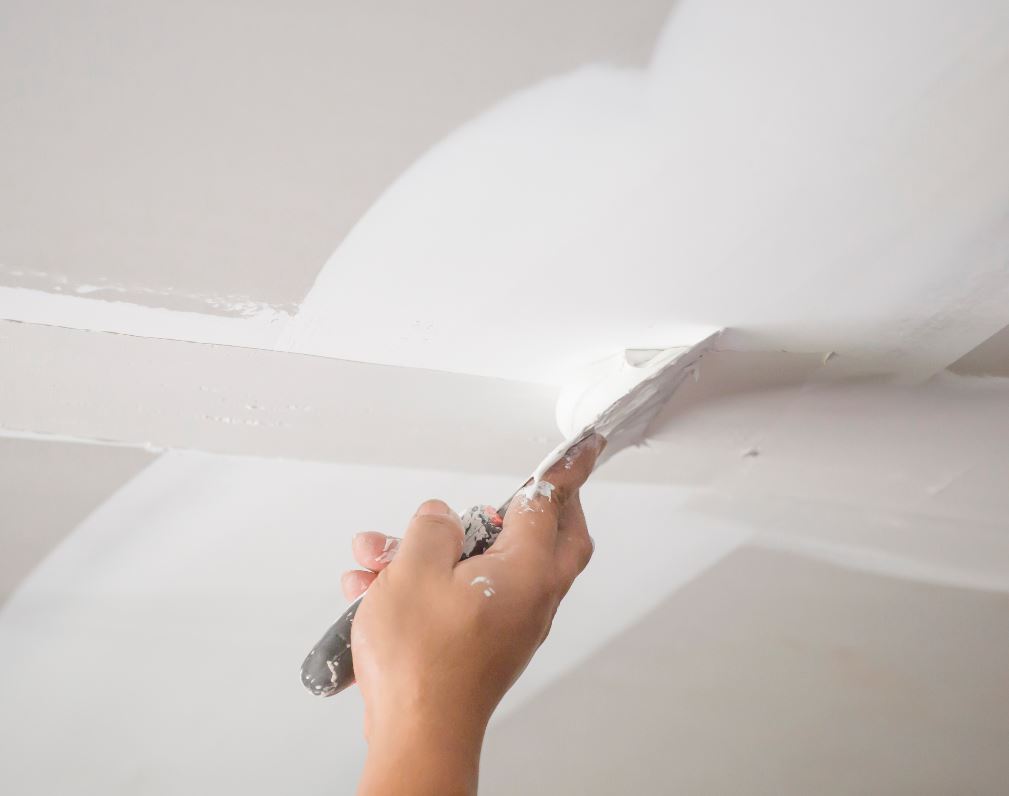Experience the difference of high-quality Drywall Repair Ogden UT with expert painting applications.
Important Tips for Effective Drywall Repair Work and Setup Strategies
Reliable drywall fixing and installation requires a mindful approach. Comprehending the types of drywall and having the right tools is important. Correct strategies and exact dimensions can greatly affect the outcome. Several neglect vital steps like taping and sanding, which can make or break the final appearance. As projects progress, typical challenges may emerge that call for interest. Checking out these pointers can cause a more refined and successful finish.
Recognizing Different Kinds of Drywall
Understanding the numerous sorts of drywall is vital for any type of effective repair service or installation job. Drywall, typically referred to as plaster board, can be found in numerous ranges tailored for details applications. Requirement drywall is one of the most commonly used type, ideal for basic interior wall surfaces and ceilings. Moisture-resistant drywall, typically eco-friendly in color, is made for areas prone to humidity, such as kitchens and shower rooms. Fire-resistant drywall, typically tinted pink or purple, is crafted to withstand higher temperatures and is typically made use of in garages or near furnaces. Furthermore, soundproof drywall helps in reducing sound transmission, making it ideal for multi-family homes or taping studios. Specialized drywall, like cement board, is made use of in wet areas like showers or bathtub borders. Understanding these types assists in picking the appropriate product for each task, guaranteeing sturdiness and efficiency out of commission or brand-new installments.
Necessary Devices for Drywall Fixing and Installation
Having the right tools is important for reliable drywall repair and installment. A quality energy knife is important for reducing drywall sheets precisely. A drywall T-square aids ensure straight sides, while a taping knife is needed for using joint substance smoothly over seams. In addition, a drywall saw enables removing harmed areas or fitting drywall around fixtures.
For hanging drywall, a power drill with drywall screws is crucial, as it allows safe and fast setup. A level is likewise vital to confirm that the drywall is straight and appropriately aligned. A sanding block or pole sander is essential for raveling joint substance once it has dried out. Finally, a determining tape is vital for precise measurements, stopping waste and ensuring a proper fit. Geared up with these devices, individuals can tackle drywall jobs effectively, bring about professional-looking outcomes.
Step-by-Step Guide to Fixing Holes and Cracks
When dealing with holes and cracks in drywall, having the right devices and products is crucial for a successful repair. This overview details the essential products and offers a clear, step-by-step process to properly recover the surface area. Comprehending these components will help ensure a smooth surface and resilient outcomes.
Tools and Materials Needed
A fully equipped toolkit is essential for efficient drywall fixing and installation. Key tools consist of an energy knife for reducing drywall, a measuring tape to guarantee accurate sizing, and a drywall saw for bigger openings. A putty blade is essential for applying joint substance smoothly, while a fining sand block or post sander helps accomplish a smooth surface. For patching, a roll of fiberglass mesh tape or paper tape is essential to enhance joints. In addition, a drill and screws are required for safeguarding new drywall pieces. Vital materials are composed of joint substance, primer, and paint to complete the repair work. Having these devices and products handy ensures a smoother, extra efficient fixing procedure, yielding professional-looking outcomes.
Repair Refine Steps
Repairing holes and splits in drywall needs a methodical technique to guarantee a smooth finish. Initially, the location bordering the damages must be cleaned completely to get rid of dirt and debris. Next, for small splits, a putty knife is made use of to use a joint substance uniformly over the area. For larger openings, a see this site patch is needed; the harmed area is removed, and a new piece of drywall is suited area, protected with screws. Once the spot remains in setting, joint substance is used to mix the edges. After drying, fining sand the area smooth is crucial. Lastly, the repaired surface area must be primed and repainted to match the bordering wall, making sure a low-profile repair service.
Methods for Putting Up Drywall Panels
Setting up drywall panels requires mindful planning and specific implementation to assure a smooth and specialist finish. It is crucial to determine the wall space precisely and cut the panels to fit, making sure that they line up with the studs. Placing the panels flat is typically advised, as this can enhance the structural integrity and decrease the variety of joints.
Making use of drywall screws, installers ought to protect the panels every 16 inches along the studs, guaranteeing a firm hold. It is essential to prevent overdriving the screws, which can damage the paper surface area. For edges and edges, making use of an utility blade allows for tidy cuts and a tight fit.

Finishing Touches: Insulation, Mudding, and Fining sand
Once the drywall panels are firmly in position, the next crucial action includes the complements of taping, mudding, and sanding. Taping is essential for developing a seamless change in between panels and hiding joints. A high quality drywall tape, either paper or fiberglass fit together, ought to be used over the joints, guaranteeing it sticks effectively to the mud that will be used next.
Mudding, or applying joint substance, complies with the taping procedure. This compound fills up spaces and ravel the surface. A very first coat should be used kindly, feathering the sides to mix with the drywall. After the preliminary layer dries, subsequent layers may be required for a remarkable coating.
Finally, fining sand is essential to attain a smooth surface. A fine-grit sandpaper should be made use of to carefully ravel any type of blemishes. Treatment needs to be taken to prevent over-sanding, which can damage the drywall this content - Drywall Installation Ogden Utah. Properly carried out, these finishing touches create a specialist appearance ready for painting
Tips for Keeping Your Drywall After Installment
Maintaining drywall after installation is essential to protecting its appearance and architectural integrity. Routine cleansing is needed; dirt and dirt can accumulate, so mild cleaning with a wet fabric is recommended. Homeowners need to likewise evaluate for any signs of dampness or mold, especially in high-humidity locations like kitchen areas and bathrooms. If any type of damage happens, it is essential to resolve it without delay to stop further issues.
Utilizing furnishings pads can assist protect against scratches or dents from hefty things. In addition, painting the drywall with a top notch, cleanable paint offers an added layer of protection and makes future cleaning simpler. Avoid utilizing abrasive cleansers or tools, as these can damage the surface area. Preserving pop over to this web-site a stable interior climate with suitable moisture levels will assist stop deforming or fracturing over time. By complying with these ideas, one can ensure that drywall remains in outstanding condition for many years ahead.
Frequently Asked Concerns
How Much Time Does Drywall Require To Completely Dry After Setup?

Can I Mount Drywall Over Existing Drywall?
Yes, drywall can be set up over existing drywall, yet it is vital to assure the underlying surface area is secure and properly prepared. This approach can enhance insulation and minimize installation time, though it might add weight.
What Is the most effective Method to Soundproof Drywall?
The very best method to soundproof drywall includes making use of specialized soundproofing materials, such as resilient networks, acoustic caulk, and sound-dampening drywall. These strategies properly decrease sound transmission between rooms, improving general acoustic efficiency in living areas.
How Do I Pick the Right Drywall Thickness?
To choose the ideal drywall density, consider the application and location. Standard residential wall surfaces commonly make use of 1/2 inch, while ceilings or specialized areas may require 5/8 inch for additional strength and soundproofing capacities.
Are There Eco-Friendly Drywall Options Available?
Yes, environmentally friendly drywall options are readily available. These consist of products made from recycled products, gypsum boards with reduced volatile natural substances (VOCs), and those using lasting production procedures, using environmentally-conscious options for building and construction and renovation jobs.
Having the right devices is important for reliable drywall repair and installment. For hanging drywall, a power drill with drywall screws is indispensable, as it makes it possible for fast and safe setup. Secret devices consist of an energy knife for reducing drywall, a tape action to guarantee accurate sizing, and a drywall saw for bigger holes. Yes, drywall can be mounted over existing drywall, however it is crucial to guarantee the underlying surface is safe and secure and sufficiently prepared. The best means to soundproof drywall includes making use of specialized soundproofing materials, such as resistant channels, acoustic caulk, and sound-dampening drywall.